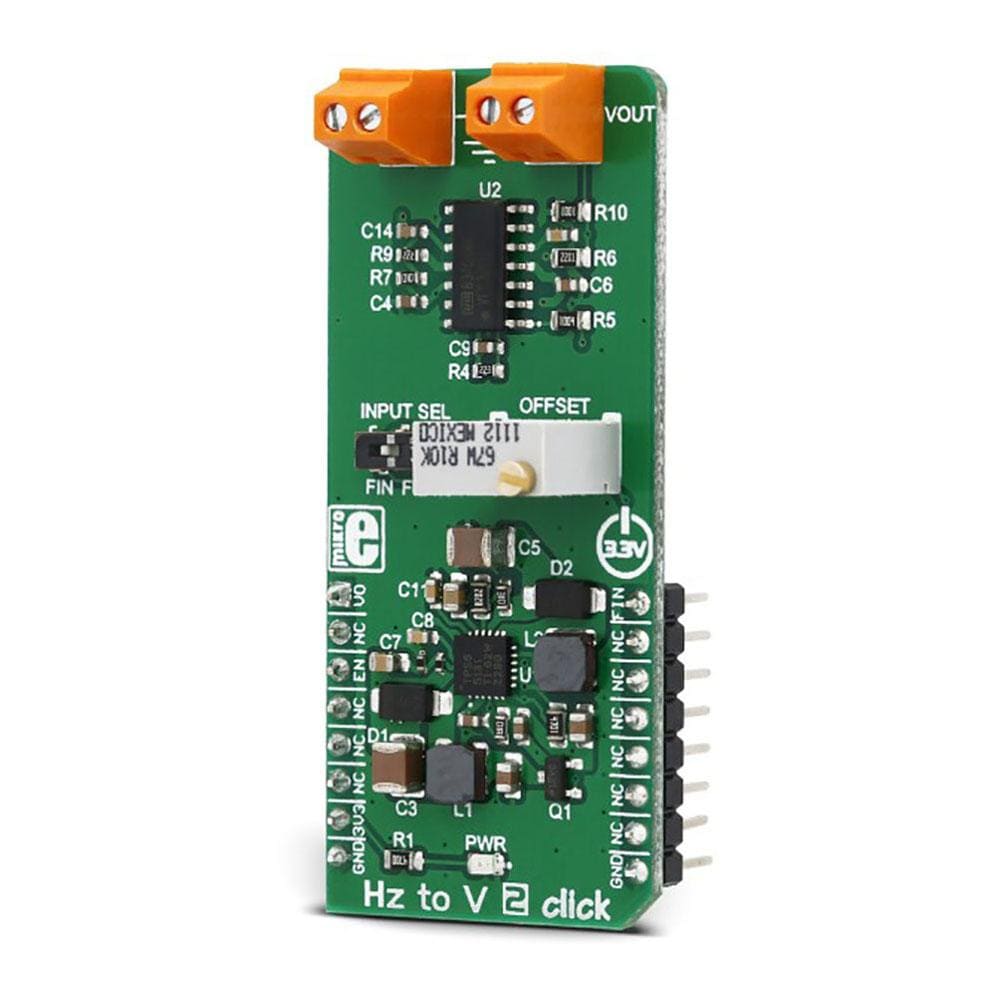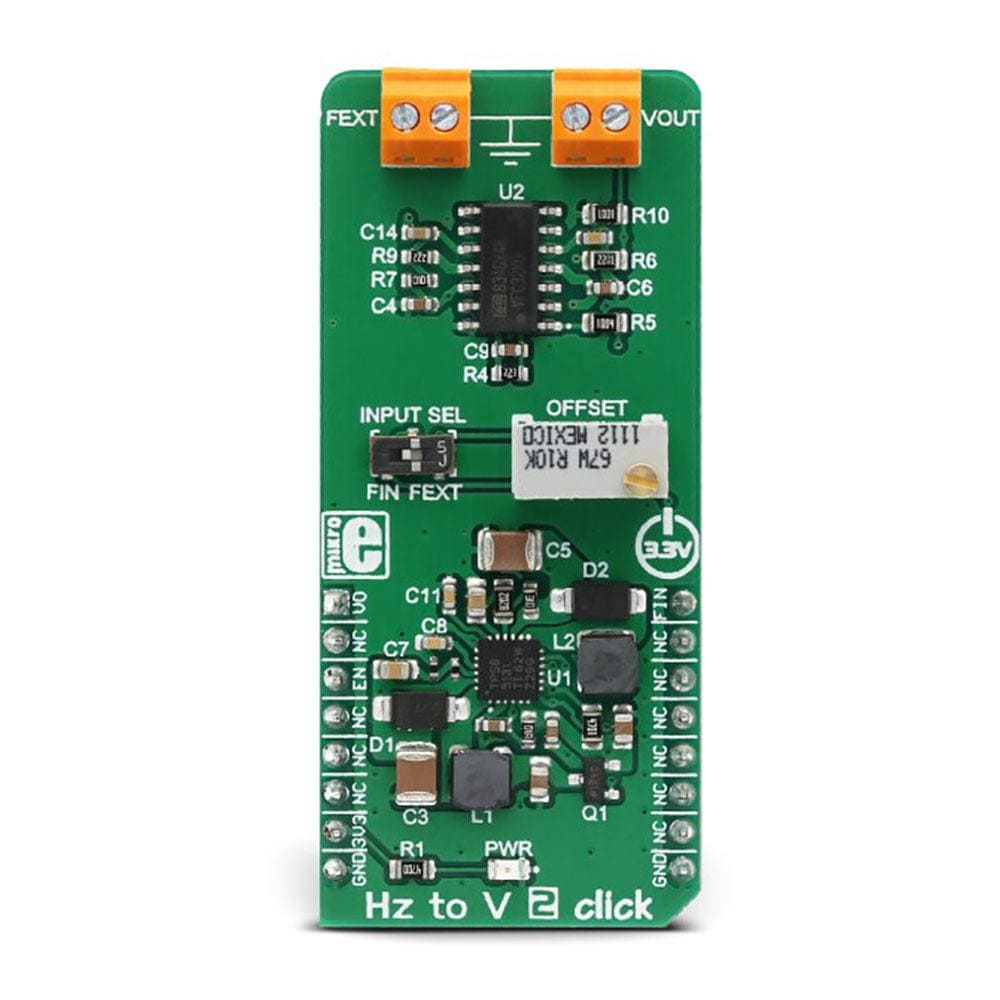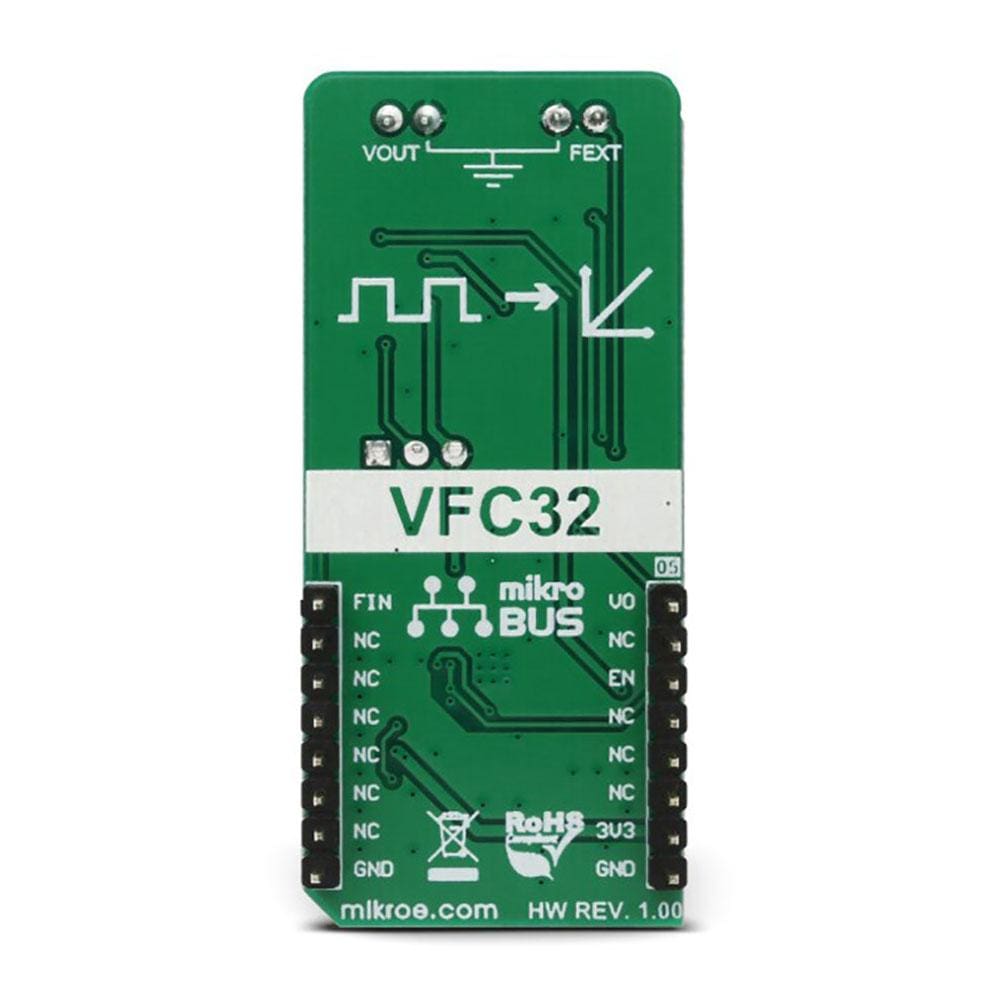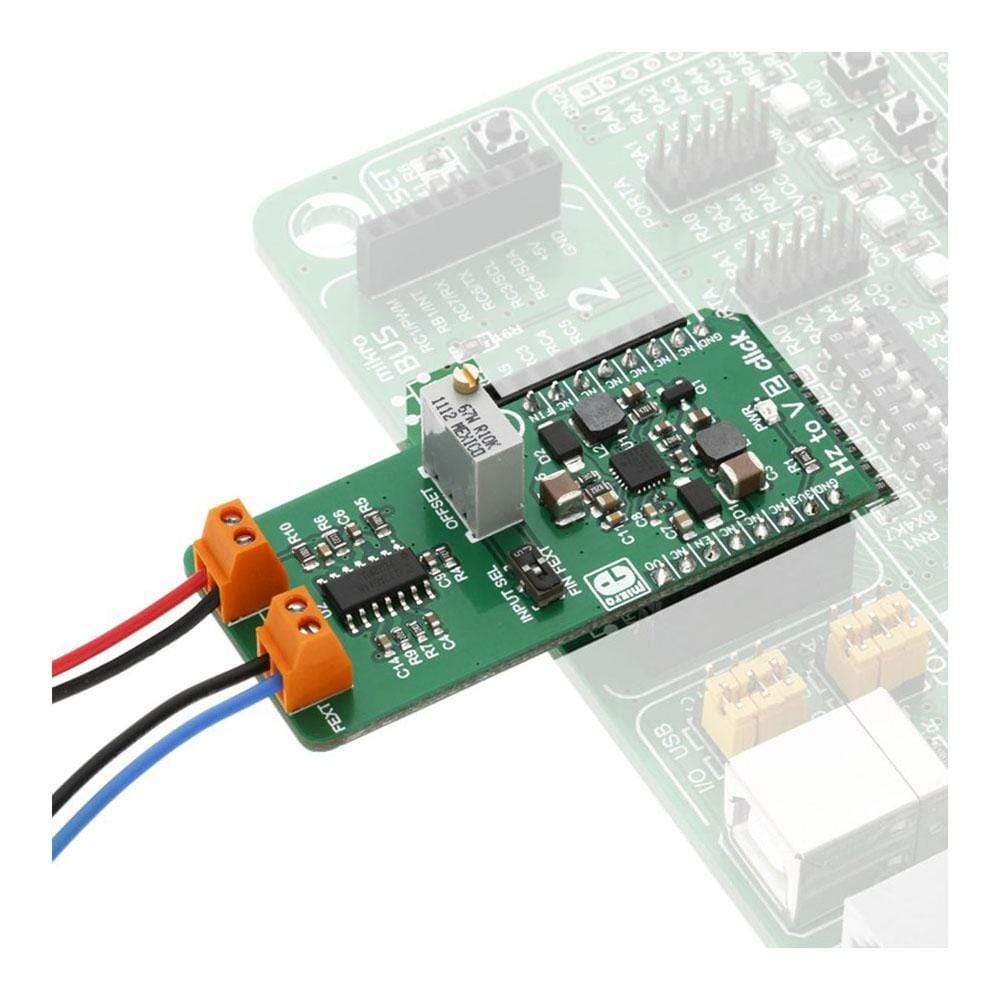



Overview
The HZ to V 2 Click Board™ contains a device that can converts the input frequency of the signal with virtually any wave shape to a DC voltage output, with a level proportional to the input frequency. It features a specialised IC labelled as VFC32KU, which has a good linear response and temperature stability. By applying a signal with the frequency up to 120kHz on its input, the HZ to V 2 Click Board™ will generate a DC voltage up to 3.3V. The IC is supplied by a dual-voltage boost DC/DC converter IC, which provides the power supply of ±15V, required for the VFC32KU IC operation.
Downloads
Le HZ to V 2 Click Board™ contient un dispositif capable de convertir la fréquence d'entrée du signal avec pratiquement n'importe quelle forme d'onde en une sortie de tension continue, avec un niveau proportionnel à la fréquence d'entrée. Il est doté d'un circuit intégré spécialisé étiqueté VFC32KU, qui présente une bonne réponse linéaire et une bonne stabilité de température. En appliquant un signal avec une fréquence allant jusqu'à 120 kHz sur son entrée, le HZ to V 2 Click Board™ génère une tension continue allant jusqu'à 3,3 V. Le circuit intégré est alimenté par un circuit intégré convertisseur CC/CC à double tension, qui fournit l'alimentation de ±15 V, nécessaire au fonctionnement du circuit intégré VFC32KU.
| General Information | |
|---|---|
Part Number (SKU) |
MIKROE-3126
|
Manufacturer |
|
| Physical and Mechanical | |
Weight |
0.023 kg
|
| Other | |
Country of Origin |
|
HS Code Customs Tariff code
|
|
EAN |
8606018713417
|
Warranty |
|
Frequently Asked Questions
Have a Question?
Be the first to ask a question about this.




